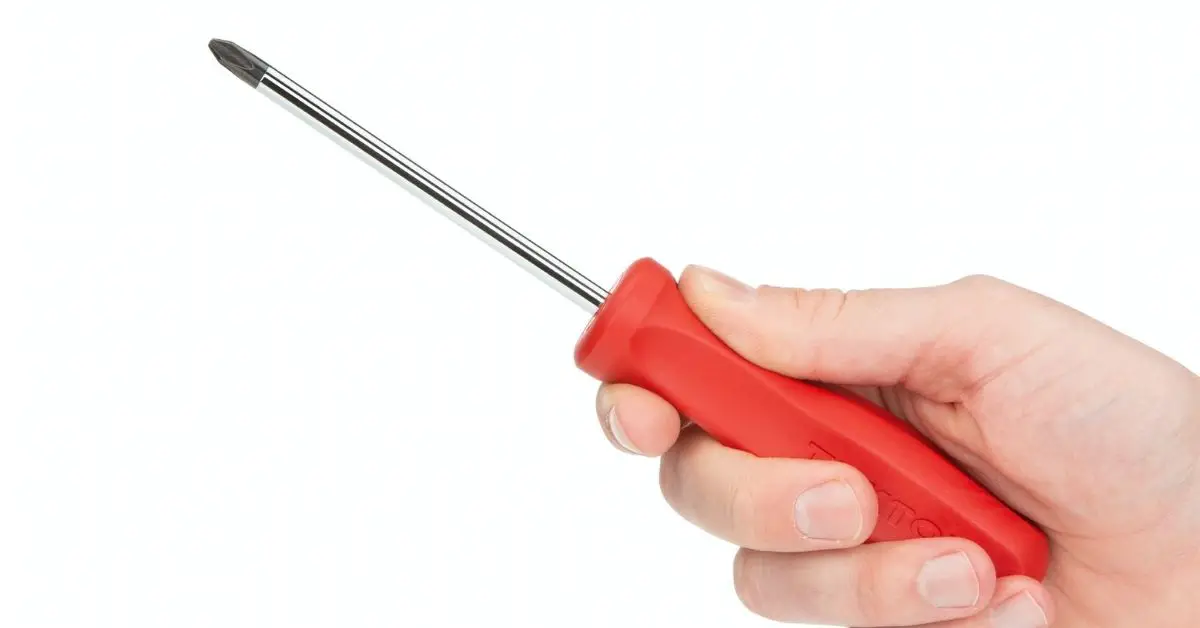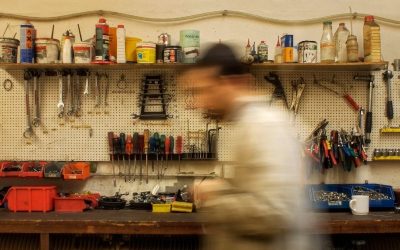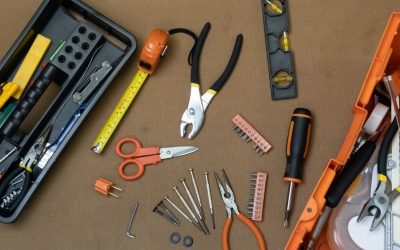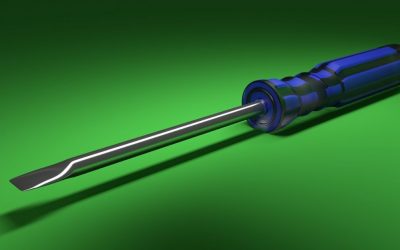Share

- What Are Screwdrivers?
- Types Of Screwdrivers
- Phillips Screwdriver
- Flat Head Screwdriver
- Phillips & Flat Head Screwdriver
- Hex (Allen) Screwdriver
- Insulated Screwdrivers
- Magnetic Screwdriver
- Electric Screwdrivers
- Ball Bearing Screwdriver
- Torque Screwdriver
- Robertson Or Square-Head Screwdrivers
- Precision Screwdriver
- Tethered Screwdriver
- Pozidriv Screwdrivers
- Clutch Head Screwdrivers
- Frearson Screwdrivers
- Tri-Point Screwdrivers
- Picking the Right Screwdriver for Your Project
- Where Can You Use Screwdrivers
- How to Properly Use a Screwdriver?
Screwdrivers are a must-have in any home or garage, but what type of screwdriver do you need? There are many different types of screwdrivers to choose from. The right one for the job depends on the size and shape of your screws. In this article, we will cover the most common types of screwdrivers and which ones to use when!
What Are Screwdrivers?
Screwdrivers are a tool used to drive screws. They have a shaft with a tip on one end and an attached handle on the other. The type of screwdriver that is needed for a job depends upon the size and shape of the head or “bit” at its tip, which varies by application.
Types Of Screwdrivers
Phillips Screwdriver
This type of screw has four distinct lobes plus a flattened area across its tip, preventing the driver from slipping out when torque is applied during installation/removal.
Cross-shaped indentations can identify it at the tip formed into two intersecting axes that form a “+”. The size designation for this tool typically consists of a number indicating the diameter at its widest point.
When To Use Phillips Screwdriver?
This type of screwdriver is typically used for installing or removing screws that have a Phillips head. Most appliances and consumer electronics are assembled with these screws due to their ability to withstand repeated disassembly/re-assembly, making them ideal for the average homeowner’s toolbox. There are also “power” versions available that an electric drill or impact driver can be driven.
Flat Head Screwdriver
A flat head screw is a fastener with a straight underside and a perpendicular shaft with external threading around its circumference. The “X” shaped indentation identifies it at the tip formed from two axes intersecting perpendicularly. The size designation for this tool typically consists of an alphanumeric code indicating overall length.
When To Use Flat Head Screwdriver?
This type of screwdriver is typically used for installing or removing screws that have a flat head. The “X” shaped indentation can identify this tool at its tip, which holds onto the fastener more securely than other types due to its shape and larger surface area. The use of this type of driver is most common for medium-duty applications.
Phillips & Flat Head Screwdriver
This screwdriver has a flat-headed tip and Phillips head tip, making it more versatile than the other aforementioned types. When torque is applied to this tool’s shaft during installation/removal, its cross-head design allows it to easily “cam out” without slipping.
The cross-shaped indentations identify it at its tip formed from two axes intersecting perpendicularly, like a flat head screwdriver. However, it also has four equally spaced lobes around this intersection like a Phillips head screwdriver.
When To Use A Combination Screwdriver?
You can use a combination screwdriver primarily to drive and remove screws with flat head slots as well as those that have Phillips style. Moreover, a combination screwdriver usually features two different-sized heads on it.
Hex (Allen) Screwdriver
A hex (or “Allen”) screwdriver is a type of screwdriver with a hexagonal bit on the tip. The typical size is ¼ inch or #0, however larger ones are used for heavy-duty applications such as automotive work. As a result, hex screwdrivers are available in many different sizes.
When To Use Hex Screwdriver?
Hex screwdrivers are most commonly used on objects such as furniture and appliances. They can also be used for computer parts, plumbing work, and automotive purposes (though the latter two require a larger size). Hex screws tend to have flat heads with sharp edges.
Insulated Screwdrivers
When electrical conductivity is a must, you need an insulated screwdriver. These tools have a rubber or plastic coating that protects the user from being electrocuted if they come into contact with exposed wires during the installation/removal of electrical components. It also prevents fraying and damage to fasteners due to excessive heat build-up while in use.
When To Use Insulated Screwdriver?
If you’re working around electrical components, this screwdriver is a must-have tool in your arsenal. It also comes in handy for installing heaters or air conditioner units where exposed wiring can become very hot to the touch during operation. Besides its use with electricity, it’s great for ladders, heavy-duty appliances, and outdoor applications.
Magnetic Screwdriver
This type of screwdriver has a magnetic tip, which makes it ideal for retrieving small metal objects. It can also be used to start screws in hard-to-reach places where the user’s fingers cannot fit or turn them using their hand because they are too large or bulky.
When To Use Magnetic Screwdriver?
There are many uses for a magnetic screwdriver. You can use it for retrieving dropped screws, assembling furniture and appliances, hanging pictures or other objects on walls without damaging them with nails etc. It’s also great to keep around the house if you need one smaller than your standard size tools because of its compact design.
Electric Screwdrivers
An electric screwdriver is a screwdriver that you can plug into an electrical outlet to power it. This tool usually has high and low speeds, which allows the user to apply more torque for heavy-duty applications or less force when installing/removing delicate hardware.
When To Use Electric Screwdrivers?
Electric screwdrivers are ideal for use by contractors who need this type of fastening device on a daily basis. Contractors also find them useful in homes where they require different sized bits regularly; because it’s not practical to carry around several driver heads at all times (like with cordless drivers). Furthermore, electric models tend to be lighter than air-powered ones. However, the latter may come in handy if your home lacks electricity such as during camping trips.
Ball Bearing Screwdriver
This type of screwdriver has a removable ball-bearing tip that provides the user with faster and smoother operation. It also ensures longer tool life because it absorbs shock when in use, so there is less wear and tears on screws and fasteners. This means they can be used to drive or remove even large/heavy-duty screws without cracking them or stripping their heads.
When To Use Ball Bearing Screwdrivers?
You should consider using one of these if your job requires installing (or removing) lots of equally sized parts such as woodworking projects where you need multiple crib boards to support wooden planks etc. Its design also makes it ideal for outdoor applications like working on lawn equipment since its rubber grip prevents slippage.
Torque Screwdriver
A torque screwdriver has a calibrated scale that indicates the amount of pressure needed to tighten screws. This helps you prevent over-tightening or stripping them from their heads when in use, which is great for home improvement projects such as installing cabinets and shelves etc.
When To Use Torque Screwdrivers?
This type of screwdriver comes in handy if your job requires driving lots of similarly sized fasteners. It allows you to apply the exact pressure necessary every time and prevent damage due to excessive force while tightening nuts/bolts. For example, using this tool prevents deep threading (which makes removal difficult) and breaks parts like taps and dies during installation processes.
Robertson Or Square-Head Screwdrivers
These are also known as “square” or “Robertson plus driver” screws. They look like a cross between the Phillips and star head screwdriver types because they have four sides (like stars), but there is no center slot to drive them with.
Instead, these fasteners require matching square-shaped drivers for installation/removal purposes. This type of screw has become popular in Canada where it was invented by PTR Industries Limited (a company that manufactures tools).
When To Use Robertson Or Square Head Screwdrivers?
These fasteners are most often found in applications where the head of the screw is flush with or below the surface.
They’re great for woodworking because they don’t have a center “elevator slot,” which would be visible on finished workpieces and may interfere with other processes such as gluing, sanding, or finishing.
They can also be used to join together different types of materials (such as metals) without damaging them through over-driving; however, note that these screws aren’t always appropriate for use on softwoods unless you pre-drill a pilot hole before driving it home, due to its tendency to split green lumber if driven into end grain.
Precision Screwdriver
Precision screwdrivers are designed for use with small fasteners such as eyeglasses, cell phones and computers, etc. They range in size from around three inches to just one inch long; which means they’re easy to handle when working on tiny parts.
The driver tip is usually made of high-quality steel that won’t wear out easily while the shafts come in either chrome vanadium or carbon alloyed steel, depending on the manufacturer’s preferences/marketing strategies.
Finally, these tools also have non-slip handles (to make them easier to grip) plus a pocket clip so you can always take your precision drivers with you without having to search through toolboxes or bags trying to find them later.
When To Use Precision Screwdrivers?
This type of screwdriver is handy if you work on small electronic devices (such as iPhones and digital cameras) or need to tighten/loosen tiny screws that are hard to reach. They’re also great for working with precision equipment such as watches, clocks, etc; which is why they make excellent gifts for the people who like tinkering around at home or use these tools in their day-to-day jobs.
Tethered Screwdriver
A tethered screwdriver contains a cord that connects the handle to your screwdriver bit, making it easier and safer to use than most other tools. This is especially true if you’re dealing with overhead repairs or working on large surfaces where dropping small screws can be dangerous (and may cause damage).
When To Use Tethered Screwdrivers?
Tethered screwdrivers are convenient because they prevent accidents such as losing fasteners while also providing stability when driving them into hard-to-reach places. This type of tool comes in handy for everything from assembling furniture to hanging wall décor since it provides extra torque due to its ability to rotate 360 degrees.
Pozidriv Screwdrivers
Pozidriv screwdrivers are similar to Phillips in that they’re designed with a cross-shaped tip. However, the four corners of each blade have slightly rounded edges (rather than being completely flat) which makes them less likely to slip off when you apply rotational force.
They also feature tapered shafts and handles for easy insertion into fasteners while the blades themselves range from around 0.04 inches to below 0.02 inches thick depending on how thin/fat they need to be for your purposes. When it comes time to remove these fasteners, simply press down on one side of its head until it pops out without having to worry about slipping or breaking anything.
When To Use Pozidriv Screwdrivers?
Pozidriv screwdrivers are by far the best option to use with Pozidriv screws because their rounded corners prevent them from slipping out of fasteners, even when exposed to significant rotational force.
You can also try using these screwdrivers if you’re looking for a hybrid between Philips and Torx in that they’ll fit into Phillips head screws but won’t round them out as quickly.
Clutch Head Screwdrivers
Clutch head screwdrivers feature either a six-pointed star or diamond-shaped tip; which creates more contact points with the fastener (which means there’s less chance of slipping and stripping its surface).
They also have thin, flat blades that make it easy to drive in screws without having to apply excessive force.
When To Use Clutch Head Screwdrivers?
Suppose you’re looking for an alternative to Philips/Pozidriv in that they give you increased stability when tightening down small parts while also preventing them from being damaged. In that case, clutch head screwdrivers are exactly what you need since their tips create additional contact points between your tool and the screw.
However, note that these drivers won’t fit into all types of Phillips heads because they have a different number of contact points; so be sure to check your screw’s specification before trying them out.
Frearson Screwdrivers
Frearson screwdrivers are basically Phillips screwdrivers. The difference between them is that Frearson has a straight blade instead of the “star” shaped head on Phillips screwdrivers, making it more suitable for slotted screws.
When To Use Frearson Screwdrivers?
Frearson screwdrivers are best used for larger screws and when you want to make sure the fastener is secure. Moreover, Frearson screwdrivers are also used for fastening and loosening screws especially if the head is larger than the slot.
Tri-Point Screwdrivers
Tri-point screwdrivers are also called “Y” shaped or triple-slotted heads which has three slots in a triangular shape. It has bigger contact points on the fastener so it can provide more torque while driving screws into place compared to other types of drivers. They’re especially useful when you want to make sure that your driver won’t slip out since its middle contact point prevents this from happening easily.
When To Use Tri-Point Screwdrivers?
Tri-point screwdrivers are perfect for smaller screws that have narrow slotted heads. You also need them when you want to prevent the driver from slipping out of place easily, especially on delicate projects like electronics where precision matters most.
Picking the Right Screwdriver for Your Project
It is not enough that you have a screwdriver in your toolbox, you need to know what kind of screws it is suited for. Here are the things to consider when buying a screwdriver:
The Type Of Material
When buying a screwdriver, you need to know the material of the screw. A slotted head is fine for softer materials like wood or plastic because it can easily cut through these materials without stripping them off.
For harder metals that are prone to slipping out of your grip, cross-head screws are perfect for holding things in place while still being easy enough to remove. They have an extra blade that keeps metal from slipping away and causing damage when removed with pliers or other devices using brute force.
The Size Of The Screws
You also want to consider size, regular slot sizes tend not to fit well into smaller screws so if this is what you’re working on then go for something smaller instead! If you don’t mind making bigger holes in your soft materials, you can also use a flat head screwdriver to fit in screws of all sizes.
The Shape Of The Screwdriver Head
If the tip of your screw is more pointed, you won’t have any problems slipping out even if it’s made from hard metal.
This makes cross-head screws ideal for these kinds of projects as well! Flat headed ones are perfect for smaller objects that don’t need much grip and round heads work best with bigger surfaces like pieces of wood or drywall.
Screwdriver Usage Instructions
When using your new screwdriver, there are some things you should keep in mind: Make sure the tip isn’t damaged since this will make it slip out when trying to turn.
Even if there aren’t visible damages like scratches, try pressing down gently around the edges just in case something is loose inside which cause damage later on Use both hands when turning the screwdriver to make sure it’s secure and doesn’t slip out of your hand or cause damage by slipping into something else.
There really isn’t one single type of screwdriver which works perfectly on everything so it’s important to think about what kind would be most suitable before using them effectively and without causing damage.
Remember: always check the size and shape of the object you’re working on and compare it to what kind of screwdriver would be ideal to use.
Where Can You Use Screwdrivers
There are so many things you can do with screwdrivers!
For Appliances
If you just bought a new refrigerator or oven and need help assembling it, you’ll be needing a screwdriver to tighten certain screws. It’s also helpful for taking apart pieces like the microwave if something needs fixing, just make sure not to strip any of them by using too much pressure!
For Furniture Assembly
Furniture assembly is tough enough on its own but having the right tools in your hands can definitely save some time and frustration down the road.
Just remember: when working with wood furniture, go slowly so that different surfaces don’t get stuck together since this could cause damage over time, making reassembly even more difficult.
If possible, try practicing putting things together at home before starting up an official project which requires accuracy and precision since rushing through these kinds of things always ends up causing more trouble than it’s worth!
For Gunsmithery
Gunsmithing requires precise work which is why you need an accurate screwdriver to tighten small screws so they don’t come loose over time. If the weapons are too big, it’s best to use a power drill instead since this will be much faster than using your hands all day!
For Your Car
The tires of cars take quite some force before they’re able to move again and even more if you’re working with steel parts like bolts. These kinds of things can strip very easily when not handled properly, especially if there isn’t much room for maneuvering around them.
This means that having the right kind of tools in your hands is essential for making sure everything works as intended without causing damage or injuries along the way. Always make sure the screwdriver is the right size and that you don’t overdo it when turning or else these kinds of things can happen.
How to Properly Use a Screwdriver?
If you already own a screwdriver and don’t know how to use it or hold it in your hands, there’s no need to worry: we’ll explain everything so you can start doing things right from the get-go!
Holding The Screwdriver
When holding the handle of the screwdriver with one hand, place your thumb on top for extra support. Make sure that when using both hands, they are placed at an equal distance away.
This will give more stability so nothing slips out of control while turning. It may feel weird at first, but these kinds of techniques become second nature over time, so taking some time practicing them before starting up real projects can save quite a bit of trouble later.
Turning A Screw
The screwdriver should be turned in a gentle manner. Always take your time and never rush through things since this can end up causing damage to other parts or even injuries if it slips out of control.
If there isn’t much room for maneuvering around, use a power drill instead. These kinds of approaches are faster but make sure not to overdo it so the tools don’t get damaged.
Safety First
- When using a screwdriver on a regular basis, there are some safety precautions you should take to avoid injuries and damages:
- always wear gloves so your hands don’t slip or get caught in fast moving objects.
- if something is too heavy for you to hold up by yourself, ask someone else be present as an extra measure of security – this way no one gets hurt!
- never overdo it with the power drill since these kinds of tools can be quite dangerous if not handled correctly! It’s best to go slowly until you’re used to working with them.
- Make sure that someone nearby supervises what kind of approach would work better depending on how big and complicated the object is (if possible). If unsure about whether or not to use a certain approach, ask someone more experienced for help!



0 Comments